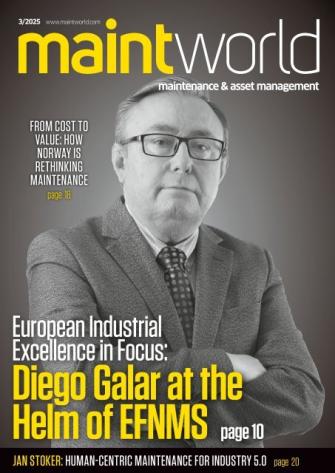Adding Value Through Qualified External Technicians
A review from 2010 showed that 56 percent of Danish companies are working with Lean Production which means that they focus on their customers, on the value streams running through them, production flow, new control approaches and optimization.
The Lean focus challenges the maintenance organizations in many ways, they have to adapt their efforts to a holistic approach. Maintenance is not just to carry out the planned jobs and to be annoyed by the production’s wish to produce instead of keeping an appointment. Perhaps the latter was the best overall solution for the company.
The maintenance organization has, among other things, to focus on keeping the value stream in a shape where it actually can produce the desired amount in the desired time. And this is a challenge that demands many competences.
First of all there has to be knowledge regarding the function demands - when are the technical items in their right shape in the value chain? In this process the production KPI’s (Key Performance Indicators) are an important tool. The maintenance organization must have an overview of the production demands so that the maintenance work planning can be tailored to fit into the value stream. They must also be able to have a well functioning cooperation with the other players in the value stream, what are the tasks for the maintenance technicians and what are the tasks for the operators - and what are the right tasks?
It is important to know the company’s strategic goals and to know ‘where you are’, how to act, and how to follow the development.
Furthermore the required resources have to be controlled – the right spare parts at the right time and the right amount, updated documentation, tools, workshops and employees with the right competences.
The competences needed for the maintenance organization can be divided into two main areas: technical competences and organizational competences. Technical competences are required to carry out the daily maintenance tasks such as faultfinding and repair, organizational competences are those which make it possible to act as described above.
The maintenance employees are typically set up as a team with various craftsmen backgrounds. If the technical competences in the team are not sufficient, the employees can participate in various craftsman courses or they can attend courses for example at the machine supplier.
What is the company strategy regarding the setup of the technical competences, is it to have every needed competence in the maintenance organization, is it to outsource all maintenance jobs or is it to hold a suitable amount of competences within own organization and contract with external craftsmen when needed.
The last solution is typical as some skills are too specific to be permanently in the organization. For example some production equipment is so specialized that educating company’s own maintenance employees to this machinery will not be an economically feasible solution – if the machine supplier is able to provide the service of competent maintenance technicians.
Engaging external maintenance employees has to add value to the company and this is of course done through the supplied specialized technical skills: item is fixed, maintenance job is done or investigation has been carried out. But can another approach add even more value to the company, what if the external maintenance employee has good competences also within the organizational knowledge area?
External technicians could – through their experience from many production plants and their competences – add more value by suggesting better production processes, better setups for operator controlled maintenance, better spare part solutions, optimized maintenance tasks and much more.
Which maintenance manager or maintenance technician wouldn’t welcome such an external technician?







![EMR_AMS-Asset-Monitor-banner_300x600_MW[62]OCT EMR_AMS-Asset-Monitor-banner_300x600_MW[62]OCT](/var/ezwebin_site/storage/images/media/images/emr_ams-asset-monitor-banner_300x600_mw-62-oct/79406-1-eng-GB/EMR_AMS-Asset-Monitor-banner_300x600_MW-62-OCT.png)



